|
|
A Turkish book regarding the
memoirs of Mustafa Kemal's confidante, Kilic Ali Pasa, has been published by
"Is Bankasi." From the third edition, Fatma S. provided (in a
discussion forum) an informal translation of pages 69 to 77.
General Harbord was in charge of a 1919
fact-finding mission arranged by preacher's son, President Woodrow ("There ain't going to be no Turkey") Wilson. His findings would
come to be known as the Harbord Commission. Having been exposed to the
avalanche of pro-Armenian propaganda as the rest of his fellow Americans,
Harbord was intensely pro-Armenian. However, the fair side of him saw for the
first time that there was much more to the one-sided story he had been led to
believe. How much this second perspective influenced him is a matter for
review, as some of the information (e.g., the Harbord Reports neglected what Niles and Sutherland had
written) was suppressed. Perhaps this is understandable, given that the side
he was exposed to during his fact-finding mission was primarily bigoted
missionaries such as Edward Partridge
and Mary Louise Graffam,
both of whom have recorded their own meetings with the general.
The book excerpt will be followed by other information regarding the American
general.
|
|
|
| An
American General in Sivas |
None of the secret meetings of our century has changed the flow of
events as the one that took place on 22-24 September 1919 in Sivas between the American
Major General James C. Harbord and Mustafa Kemal with Rauf Orbey. This event will hold its
place as one of the events that gave a break to the young Republic of Turkey.
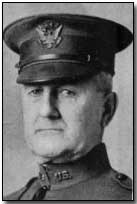 |
|
Gen. James
Harbord |
We were all anxiously waiting and yet apprehensive that General Harbord may
change his mind and not stop by in Sivas and his path would take him to a country named
Armenia that England, America, and France wanted to establish on our land.
America had joined the allies (England, France, Russia, and Italy that we had fought from
1914-1918. Our opponents had won the war against our allies Germany, Austria, Hungary, and
Bulgaria with backing from America's unbeatably strong war machine. The American Senate
had approved the foundation of a new country named Armenia occupying seven Turkish
provinces.
The American General had arrived in Istanbul on September 1, 1919 with 17 war ships, 9,000
marines, and a check book that allowed him to fill in 9 zeroes at a time. He also had all
the privileges that General Pershing enjoyed during the war of operations in Europe.
General Harbord was assigned the duty to investigate and observe the area assigned to the
new Armenian State and report his findings to the Senate.
It was a real dangerous time, because the armed forces of Armenia, founded within Russia,
had concentrated on Turkey's Eastern Borders.
The Turkish Nationalists living in Istanbul contacted the General
through the friendly director and teachers of Robert College and tried to strike a
lightning in his mind which might have been filled with false Armenian Myth. They also
alerted Mustafa Kemal who was in Sivas through Halide Edip Adivar and Huseyin Ragip
Baydur's letters.
I must admit that we were surprised at the level of importance that
Mustafa Kemal gave to the American General's visit. He paid attention to how he will win
over the General and convince him that we were sincerely telling him the truth. We
prepared the teacher's lounge for the meetings and the Kitapcizadeler's house for sleep
over.
|
|
We were all told to wear our uniforms. We prepared a
military ceremony for the guest. The small band, high officers, the Sivas governor
Resit Pasa who was a husky man and looked good in his jaketay, boys and girls
dressed in their fines (as much as they could afford). A boy and a girl handed over
a bouquet of flowers and were taught to say "Welcome" in English. Sivas
Yoruks on their horses dressed in their local costumes were placed behind them. Next
to Mustafa Kemal was Huseyin Rauf Orbay whose English was impeccable and Alfred
Rustem Bey who could speak 4 European languages.
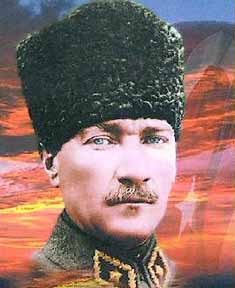 |
|
Mustafa
Kemal
|
The American General had traveled through an
Anatolia devastated by the war. Obviously he was not expecting a well coordinated
ceremony in Sivas. I still remember the look on his face. I was at the head of the
troops. Rauf Bey took a few steps forward and introduced Mustafa Kemal to the
American General. I noticed that General Harbord gazed in disbelief at the face of
this young man who grabbed everyone's attention at first sight. I could tell that he
had heard a lot about this charismatic blond man who was only 38 years old. Mustafa
Kemal shook General Harbord's hand gently and directed him towards the Military
line-up. When the little kids delivered the bouquet of flowers to him, General
Harbord bent down to the children, looked them in the eyes as if he wanted to see
the truth through them. With a smile in his lips he thanked them.
We knew how important it was to show our
hospitality. We had to erase from the Westerners' mind the undeserving image affixed
on the Turks as a result of an unfair propaganda. Many years later, Mustafa Kemal
explained to me the importance of General Harbord's visit following the reception
ceremony of the American Ambassador General Sherrill as:
"With all its potential America is a World Power. Their freedom of thought
philosophy is similar to ours. If he gets to know us as we are, a great friendship
could be formed between our two nations and this would be good for both our
countries as well as the World peace. If we could not explain the truth to General
Harbord in those days we could face irreparable damage."
The meetings between Mustafa Kemal and General Harbord took two days. It was decided
that the large group of Americans would travel to Erzurum. The Armenians had run
havoc in that city. Kazim Karabekir Bey assigned Husrev Gerede Bey and me the duty
to accompany our American guests to Erzurum.
While we were preparing for the trip, word came from Istanbul showing how desperate
the leaders in Bab-I Ali were. Padisah Vahdettin had signed on Sep 12, 1919 the
agreement that left our Government at England's mercy. We were on our way to Erzurum
on September 26, when the news of our country's surrender was released.
|
| May God
bless... Kara Kazim Bekir Pasha's soul, the liberator of the Eastern cities. We owe
our lives to him.
Elzade Sahin, a survivor of Armenian massacres.
Read the account on this page, here.
(The Massacre in Twenty-Five Villages in Kars)
May the soul of Kara Kazim Bekir Pasha rest in peace. He was the
liberator of the eastern cities, a high level official, a loyal and devoted person.
We were from the village of Isek. The Armenians fooled us. Claiming there was peace,
they gathered the inhabitants of 12 villages together, they cut off the men's paths
with bayonets, and gave the women bayonets and swords. In the village of Kalznagac
they forced the women to cut off their own men's heads with bayonets, tortured
people by cutting their faces and legs, and stuffed them into barns. After burning
the barns, they chased on horseback after those that had run away to the creeks and
hills. When they caught them, they killed them. The survivors went south to Kagizman.
The Armenians intercepted them in the Kilahna village of Kagizman, telling them
there was peace, and they would be accompanied to the Ottoman state. They offered
money to many of them, telling the Muslims who had escaped to the hills that they
would be given livestock and houses if they would come down. Then they started the
murders. They killed the Muslims with axes, bayonets, and shots in the mouth, and
set fire to their clothing. The Muslims united in Kagizman's Kizilveren village,
where the Armenians spoke to them and convinced them that they would be taken to the
Ottoman State, and their weapons were taken from them. The Armenians later stuffed
them into barns in Kizilveren village, and killed thousands of men. They cut their
legs, arms, beat them, and cut off their heads with swords. They then burned down
the barns. May God bless this army, this nation, and Kara Kazim Bekir Pasha's soul,
the liberator of the Eastern cities. We owe our lives to him. We now look forward to
our country, our religion, and our rights. We will never forget the pain Armenians
caused us, and the hurt in the hearts of our children. Armenians caused great
damage, gave women swords, made them cut off their husband's legs, hands, and
cheeks. They burned men alive.
An Armenian clergyman in the Devletli village, who read the bible, appealed to his
people to cease such behavior, which damaged the Armenians' pride. They took him and
his family to a barn at the foot of the village, asked him why he did what he did,
and burned him and his entire family alive. The clergyman was a man of God, his
heart ached at the massacres, and he cried. As he cried, the Armenians gathered more
people, filled them into his barn, and burned it down. My name is Elzade Sahin. I am
from the Karacaören village. We can never forget this pain, and should construct a
monument at the graves of these men. They should never be forgotten. I am aware of
25 villages which ache with this pain, and with this cry.
The Armenians shot an outstanding individual in the Deli Ahmet village named Kaba
Mustafa. If this man had not been killed, this Turkish nation, and this city would
not have been massacred. The Armenians told him that they wanted peace, and that
they would make him a leader. For this reason, they met him at the station where
they talked for a while. They made a pact that there would be peace, and to
celebrate they engaged in target practice. A very skillful gunman, Kaba Mustafa hit
a bull's eye. The Armenians then backed up the target. As he was preparing to fire
again, four Armenian fighters, using a special bullet, fired at one time, and his
lungs were destroyed. His last request was that a forest should replace where his
blood was spilled. You may have seen a small forest by the Deli Ahmet station. It
was sowed on that man's blood, and the Turkish nation welcomes the fact that his
wishes were heeded.
From "Armenian Atrocities & Terrorism," an ATAA
publication
[Close]
|
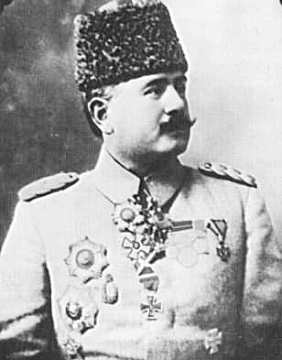 |
|
Kazim
Karabekir Pasha
|
Mustafa Kemal ordered Husrev Bey and me to show the General
everything as had happened on site. We were pleased that the large American group was
moving slowly, because even the surrounding villages were devastated by the Armenians. The
Armenians had killed some of their own kind when they came in disagreement. Armenians were
testifying to the massacres they
faced in the hands of terrorist Armenians. There were Armenians among the American group.
We were selecting the Armenians to speak to them.
Kazim Karabekir Pasa greeted the American General with a ceremony similar to the one in
Sivas. His translator Ali Sukru Bey's English was impeccable too. General Harbord was so
impressed that he said "I did not meet soldiers who can speak English as fluently as
yours do, not even in Italy."
Karekin Pastirmaciyan who was representing Erzurum at the Ottoman
Meclis-I Mebusan headed the Armenians who marauded Erzurum with the advent of the Russian
army. He took refuge in Russia when the Russian Army retreated. Later he took the name
Armen Garo, meaning Armenian Hero. He resorted to all kinds of atrocities among the
Muslims of Erzurum with the Hinchak and Dashnak soldiers of Russian origin troops that he
led.
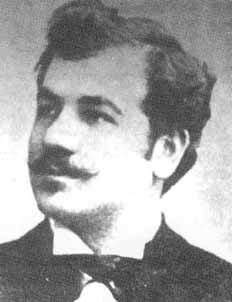 |
|
Karekin Pastirmaciyan, during his
days
as a younger terrorist; he helped lead
the Ottoman Bank takeover in 1896.
|
Antranik arrived in Erzurum after Karekin Pastirmaciyan left. His
atrocities were so fierce that the Russian Occupying General Ruchevsky had to send him out
of the City of Erzurum. The local Armenians who did not join Antranik were also tortured.
They had escaped to the mountains and came out only after the Turkish Army arrived. Kazim
Karabekir Pasa faced the American General with these sad realities. We were staying at the
Dumluzade's estate on the second day of our trip when a woman dressed in Turkish attire
entered the garden. We wondered who this woman was that she could travel alone.
Later we found out that she was an Armenian nurse who worked at the
Merzifon American College. She had joined the Armenian forces as they were invading the
city in front of the Russian Army. When she saw the atrocities they performed on the
innocent civilians, she argued with them. They threatened her, so she escaped to the
Russian Commander's post with two Turkish children. She served the Russians as a nurse.
After our soldiers took back the city, she was protected by the families of the Turkish
boys whose lives she had saved. When she found out that an American General arrived to
investigate the situation on site, she paid this visit to tell him about her experiences.
There were two people of Armenian origin in the American group and the Patriarchate had
assigned the General three translators of Armenian origin. Rauf and Rustem Bey in Sivas,
Ali Sukru and Irfan Bey in Erzurum checked the documents that they had translated.
However, one of the American Armenians in the group said in Armenian to the translators to
do the translation as they please in front of this woman who was dressed up in Muslim
attire. She quickly informed General Harbord of the conversation and the General kept her
in his entourage until he left Erzurum.
Our mosques, schools, and even our graveyards had been ransacked. The Armenian churches,
schools and graveyards remained in good shape.
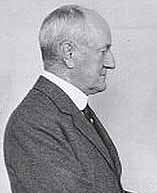 |
|
James
Harbord in 1930 while
retiring as president of RCA |
In some Muslim villages no stone was left unturned. The Armenian districts
remained untouched in return. The General could see these for himself. General Harbord
traveled onward from Erzurum to Kars and all the way up to Erivan. Probably he witnessed
similar signs of rebellion on his trip onward. It was the path that the Russian troops had
followed.
Harbord was bid farewell in the same sincere and proud manner that he was greeted by the
people who had nothing to hide. While shaking General Karabekir's hand he loudly said;
"I saw the truth on location." Husrev Bey and I returned back to Sivas at the
same time that General Harbord left Erzurum.
|
|
Holdwater adds: And the general deserves respect for
not concealing some of these truths. Yet, the overall impression provided in his
reports to the United States Congress still focused on the brutality caused by the
Turks. The effect of his Armenian interpreters must have proven overwhelming,
assuming Harbord managed to check most of the anti-Turkish prejudices he was not
alone in being brainwashed with.
ADDENDUM, Feb. '06: A July 1921 interview of Ataturk conducted by Lt. Robert
Dunn reveals that Ataturk felt Harbord
failed to keep promises he had made. Dunn adds the missionary, Mary Graffam,
gave the same opinion.
|
| The
Dishonesty of James Harbord |
The following is from a book by Prof. Justin
McCarthy, the title of which has been misplaced for the moment; the chapter is entitled,
"AMERICAN INVESTIGATION OF EASTERN ANATOLIA." After criticism of other Harbord
statements as "falsifications," the professor continues:
Harbord even falsified the reporting of Armenians. The Harbord mission did not go to the
worst areas of wartime loss in Eastern Anatolia, and Harbord obviously realized that this
was a disadvantage to his report. His statement on the Mission's travels obfuscates that
fact:
All of the vilayets (provinces) of Turkish Armenia were visited except
Van and Bitlis, which were inaccessible in the time available, but which have been covered
by Captain Niles, an army officer who inspected them on horseback in August, and whose
report corroborates our observations in the neighboring regions.35 (Footnote: Harbord
in 184,02102/5, p. 2.)
In reality, saying "all the vilayets of Turkish Armenia were visited except Van and
Bitlis" is deceptive, because even areas of northeastern Anatolia had been visited
only by sub-groups of the Commission. The sub-groups were usually led by Sherkerjian or
Khachadoorian (who drew up reports of the sub-groups). More deceptive, Harbord's statement
on Captain Niles' investigation of Van and Bitlis, the provinces where Muslims had
suffered the most at the hands of Armenians, was completely false. Captain Niles had
assuredly visited those provinces and had written a report, but his report did not agree
with that of Harbord. Most of its conclusions were opposed to Harbord's , but Harbord did
not include a copy of Niles' report with his, nor was it to be found anywhere in the
printed Mission reports.
The report of Captain Niles was in reality the only one of the American reports that can
be considered neutral.
|
|